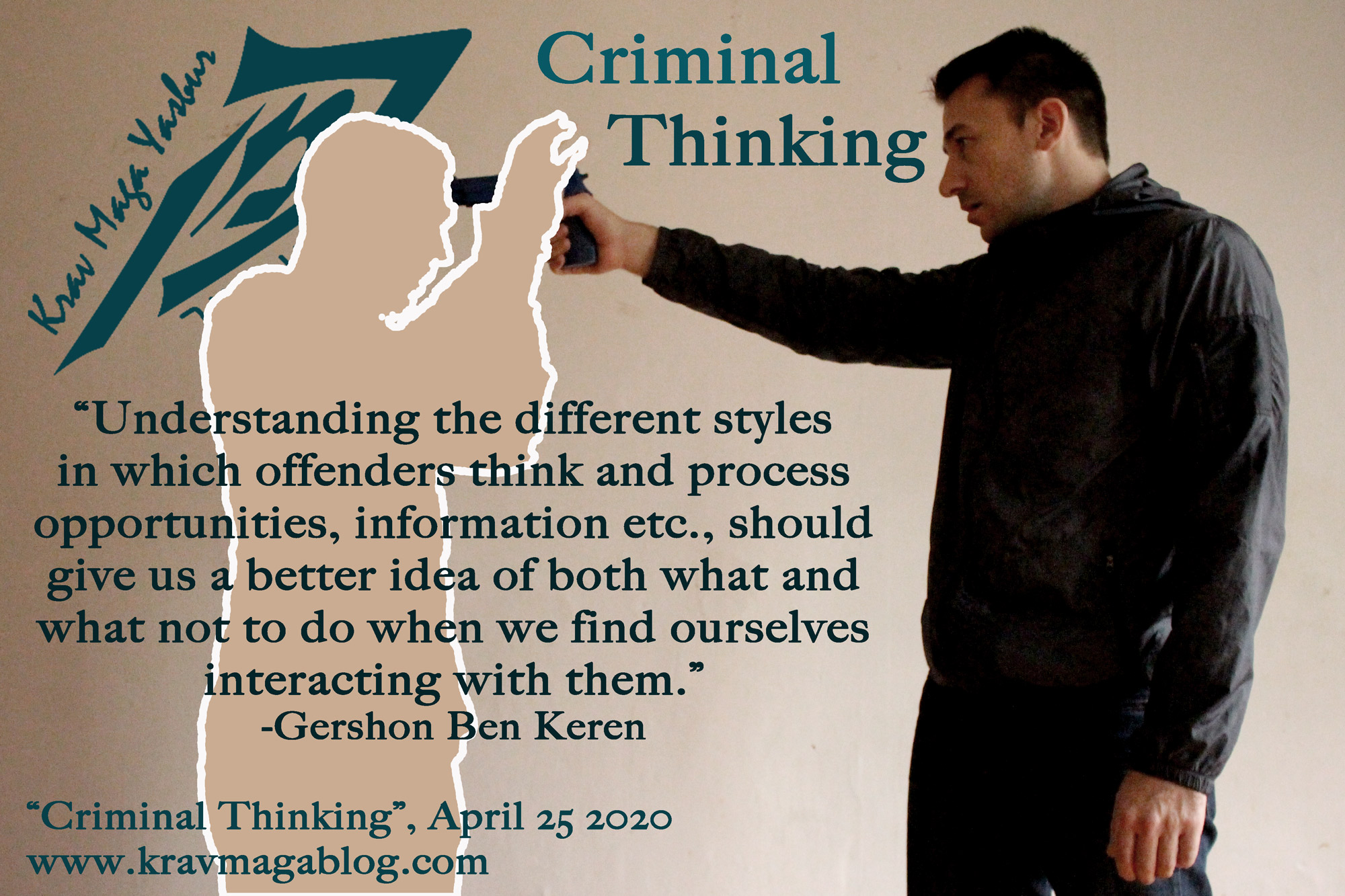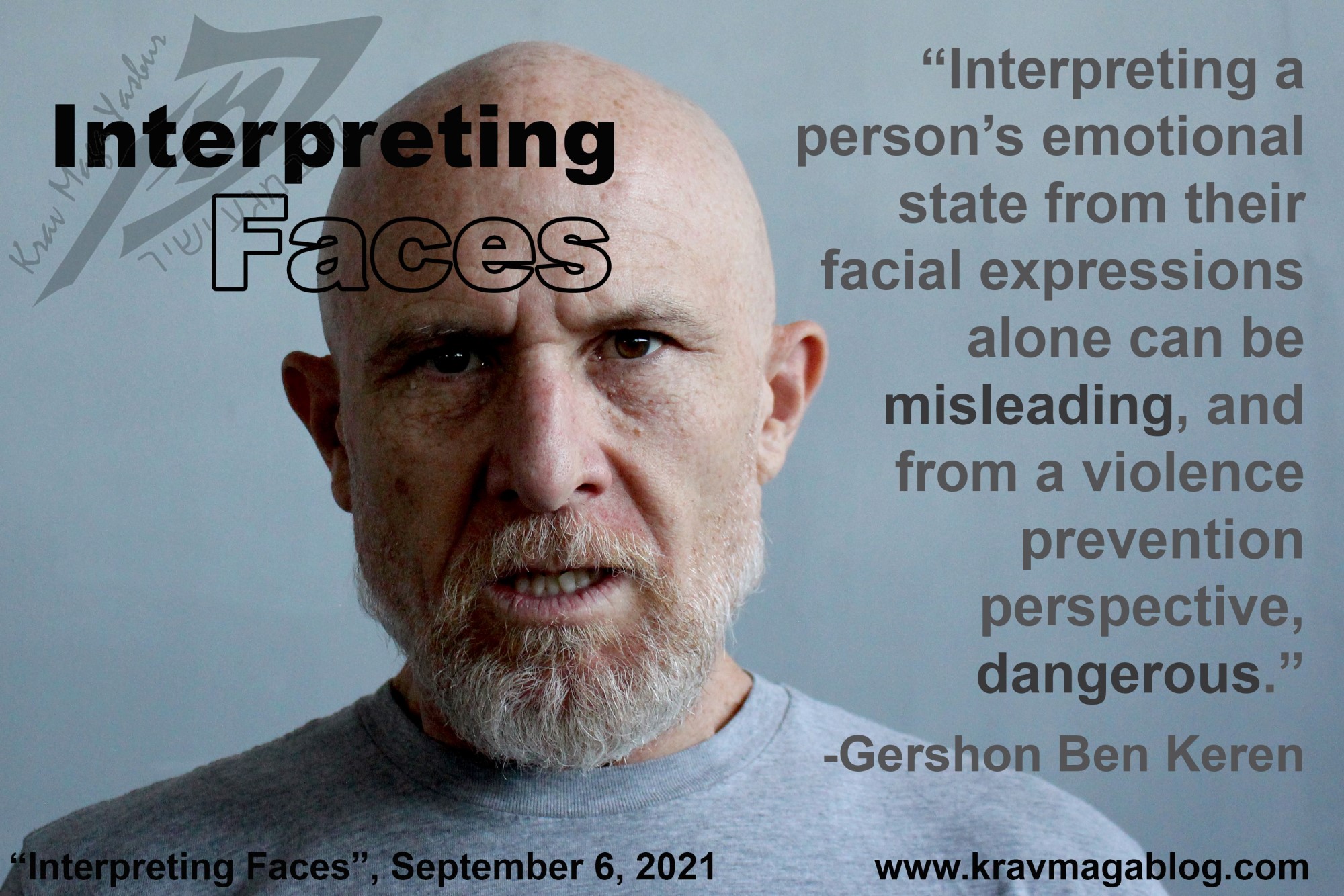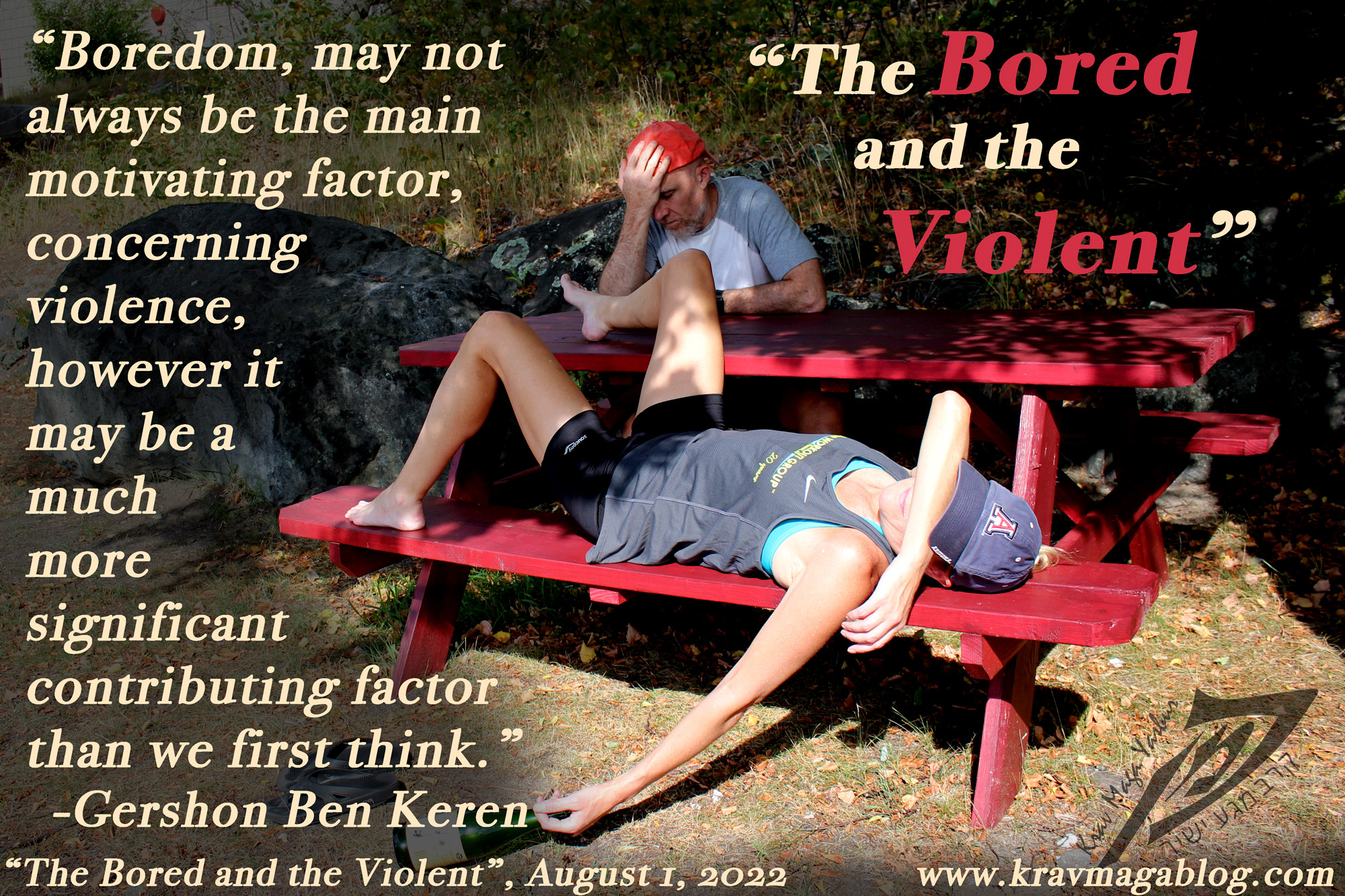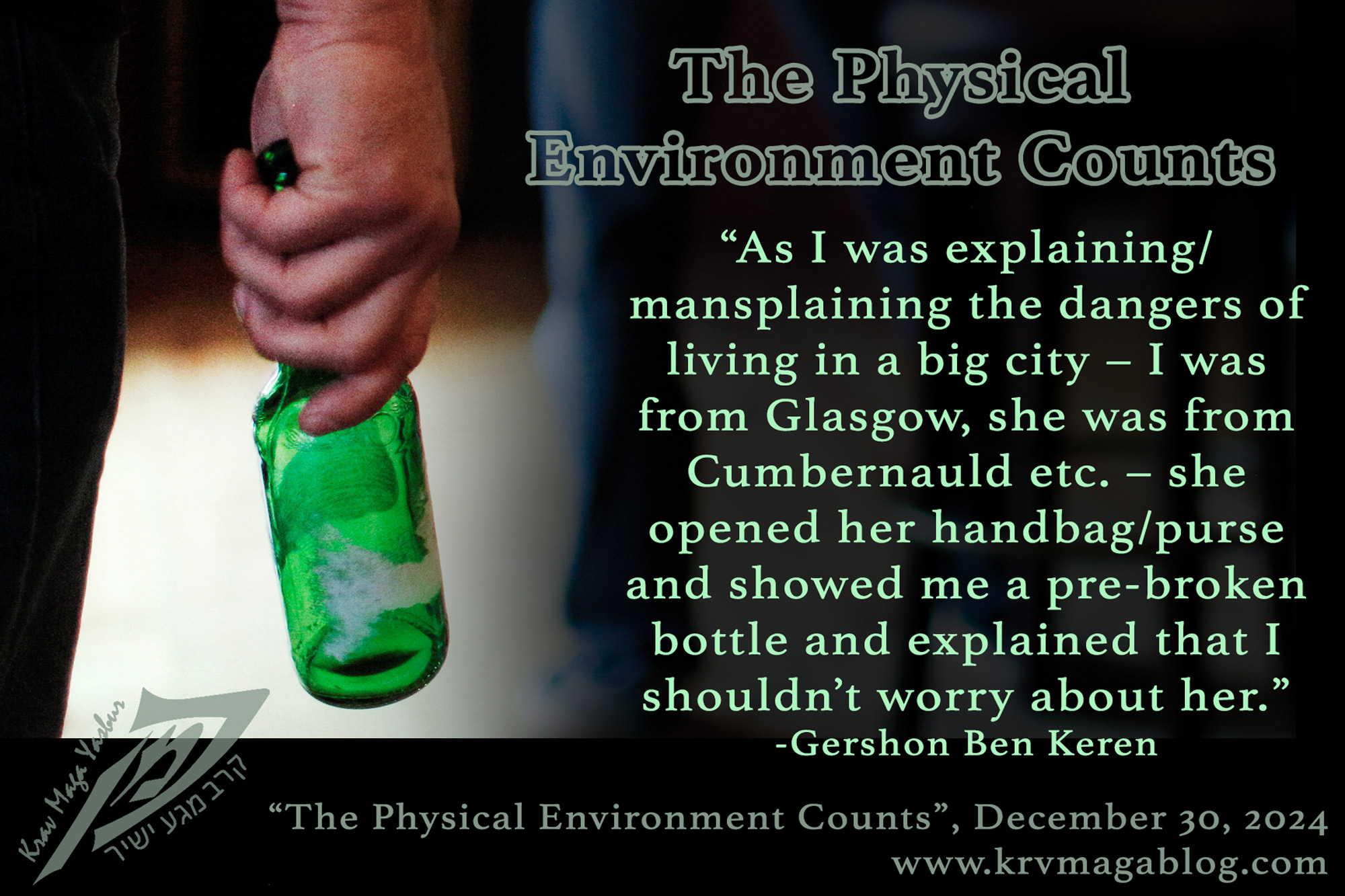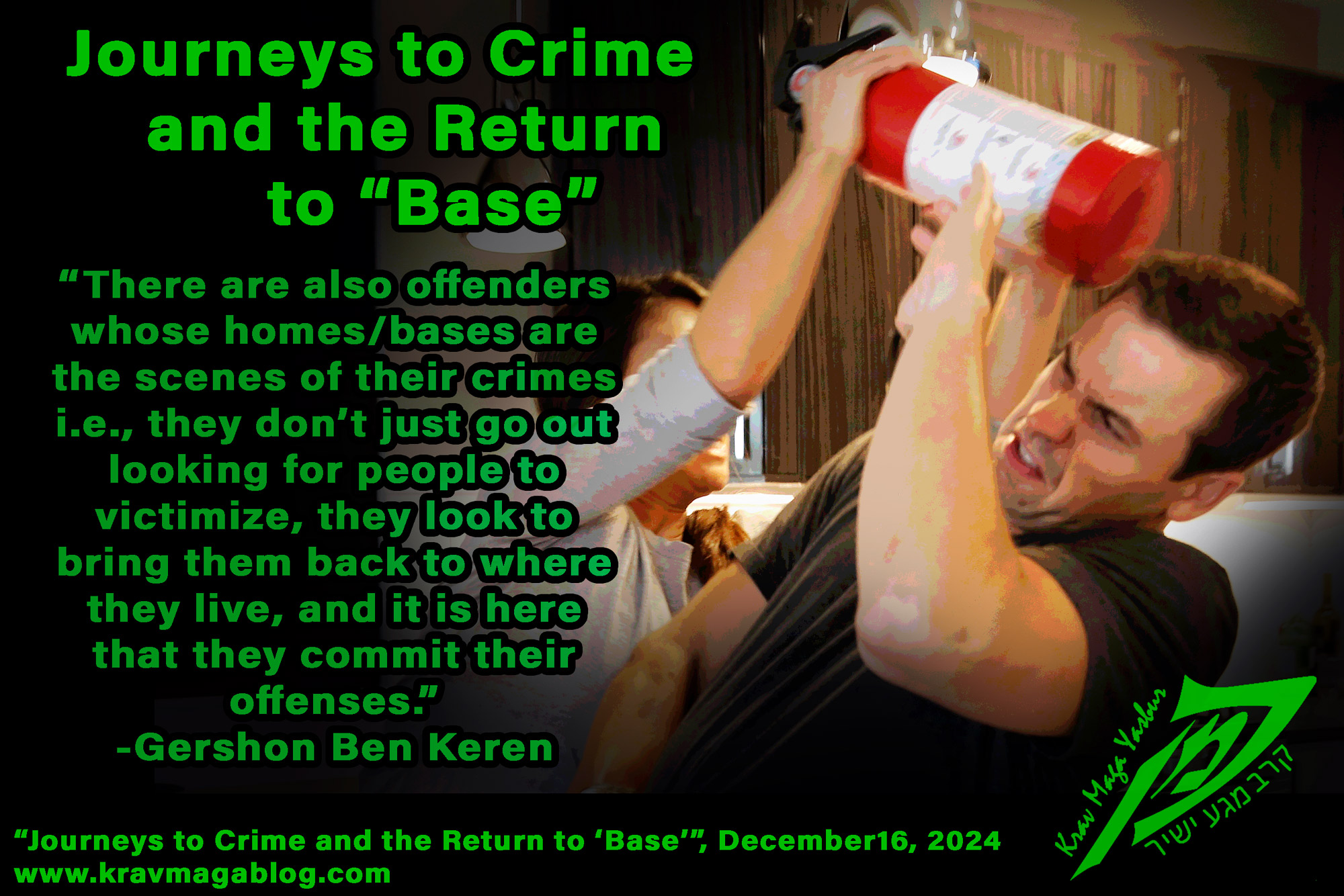The Bored & The Violent, is an article written by Gershon Ben Keren, a 5th Degree Black Belt in Krav Maga, who teaches Krav Maga in Boston, MA. He has also authored three Amazon best-Selling Books on Krav Maga.
In 1962, the playwright Arthur Miller (Death of a Salesman, The Crucible etc.) wrote an article in Harper’s Magazine, entitled, “The Bored and the Violent”. Violent crimes had been rising in the post-war period, and although part of this may have been due to returning soldiers who had been normalized to aggression and violence, due to their experiences of war (this has been a commonly observed phenomenon post conflicts), it would be hard for such explanations to account for the increase in violent offending during the early 1960’s. Much of the violence, during this period, had become politicized, with many politicians blaming it on rebels, who were espousing a counterculture, to that of 1950’s America. However, Miller made the argument that America’s youth weren’t rebelling against anything in particular, they were just bored; that everything society offered them, from religion to the media and the entertainment industry, simply didn’t interest them. Although, the saying that the Devil finds work for idle hands had long been in existence, Miller’s argument and article was one of the few times, that this idea was expanded and built upon. The common viewpoint at this time was still that crime and violence was linked to poverty, even though the statistics weren’t backing this up (GDP and the standard of living had been increasing steadily after the war), and in fact it would have been in line with Miller’s political thinking and affiliation to support this belief. However, he chose to give a different explanation for the rise in violent offending, one which now has a lot of support, especially amongst those who work with juvenile offenders. In this article I want to take a look at boredom, as a motivating factor in violence.
One of the traits of psychopathy is chronic boredom; very little excites psychopaths. It takes a lot for them to get excited. Things that most people get enjoyment from, such as watching a good film, playing sports, reading an interesting book, socializing with friends and family members etc. doesn’t give those with psychopathy the same pleasure; they are in a state of constant restlessness, looking for something that will interest and excite them. This is one of the reasons that they engage in complex lies and acts of deceit; they are trying to fill this void and alleviate their boredom. This is also why some may engage in acts of aggression and violence, getting a thrill from the risks that they take. The other reason boredom is a problem for those with psychopathy is that in idle moments they have time to reflect on who they actually are, and this may cause them – like narcissists – to question the grandiose image of themselves that they have created. In the self-preservation of the “reflection” of themselves, which they adore – and believe others should too – it is better to fill time that could be spent questioning it, with some other activity, possibly one that would help reinforce and support their self-image, such as dominating another person physically, using violence. Whilst those who would be clinically defined as psychopaths, make up a very small percentage of society (possibly less than 1%), there are many people who have some of the symptoms and attributes of the condition – as with many personality disorders. Many people suffer from some for of grandiosity, and elevated self-worth, would not be diagnosed as being psychopaths and narcissists, as they lack some of the other symptoms of the disorder etc. There are also individuals who are easily bored and crave excitement, who would not meet all the criteria of psychopathy. However, by looking at psychopathy we can better understand why/how boredom can be linked to, and result, in violent offending.
In Glasgow in the 1950’s and 60’s, there was an initiative to deal with inner city decay and violence. This saw the creation of new housing estates and projects, around the city’s edges. Those who had been living in and near the city’s center were relocated to these. Part of the thinking behind this was to break up some of the established communities that had a history of crime, allowing for these newly created estates, to give people a fresh start. The main issue with this policy was, that although people were being given more modern homes to live in, there was little other infrastructure, such as shops, and places of entertainment. People, especially young people, quickly became bored and started to look for activities that were exciting, most of which were illegal e.g., joyriding, drugs, underage drinking, and violence etc. Some of these activities, such as drug use, brought more violent people into these communities, and led to people using violence to support their habits. Knife crime spiraled, and Glasgow soon became the murder capital of Europe; more people survive gun shot wounds than knife attacks. Many of the initiatives, that saw the successful reduction of this increase in violence revolve around projects that diverted young people’s boredom into legal activities, such as sports leagues etc. It is tempting to think that the increased access to the internet, has created an environment where time can always be filled e.g., with online gaming, and streaming movies and tv shows etc., however not all communities have the same access to these things, and there is a limit to their consumption i.e., people will always have a degree of boredom, and will look for ways to fulfill their time, with violent offending being one of these activities.
Boredom, may not always be the main motivating factor, concerning violence, however it may be a much more significant contributing factor than we first think. It may also explain how factors such as poverty contribute to crime e.g., it is not that poverty directly influences crime, but rather that a lack of access to legal activities – that could deal with boredom - either because they are not provided in certain communities or cannot be afforded is really the reason why people offend.
0 COMMENTS